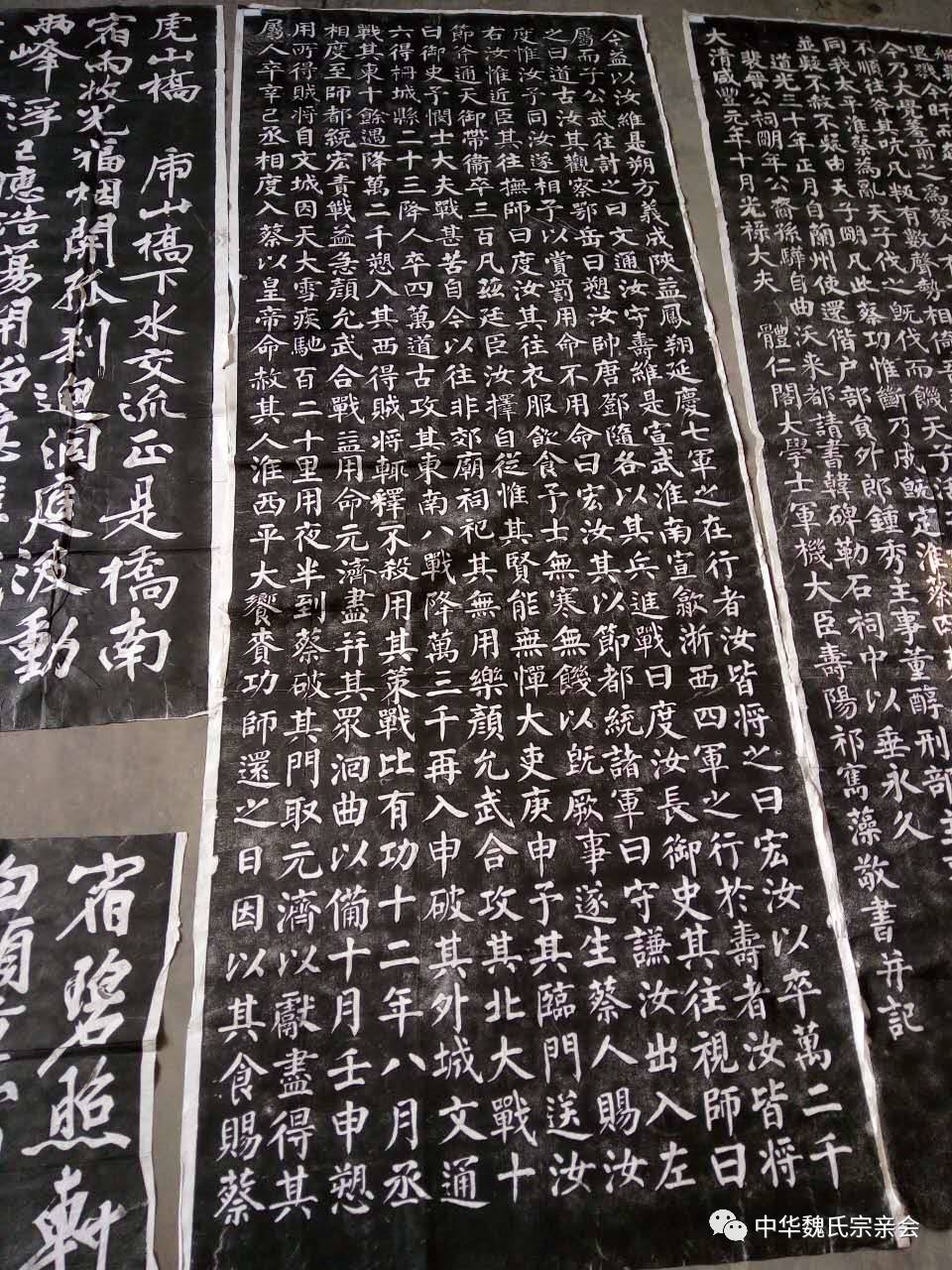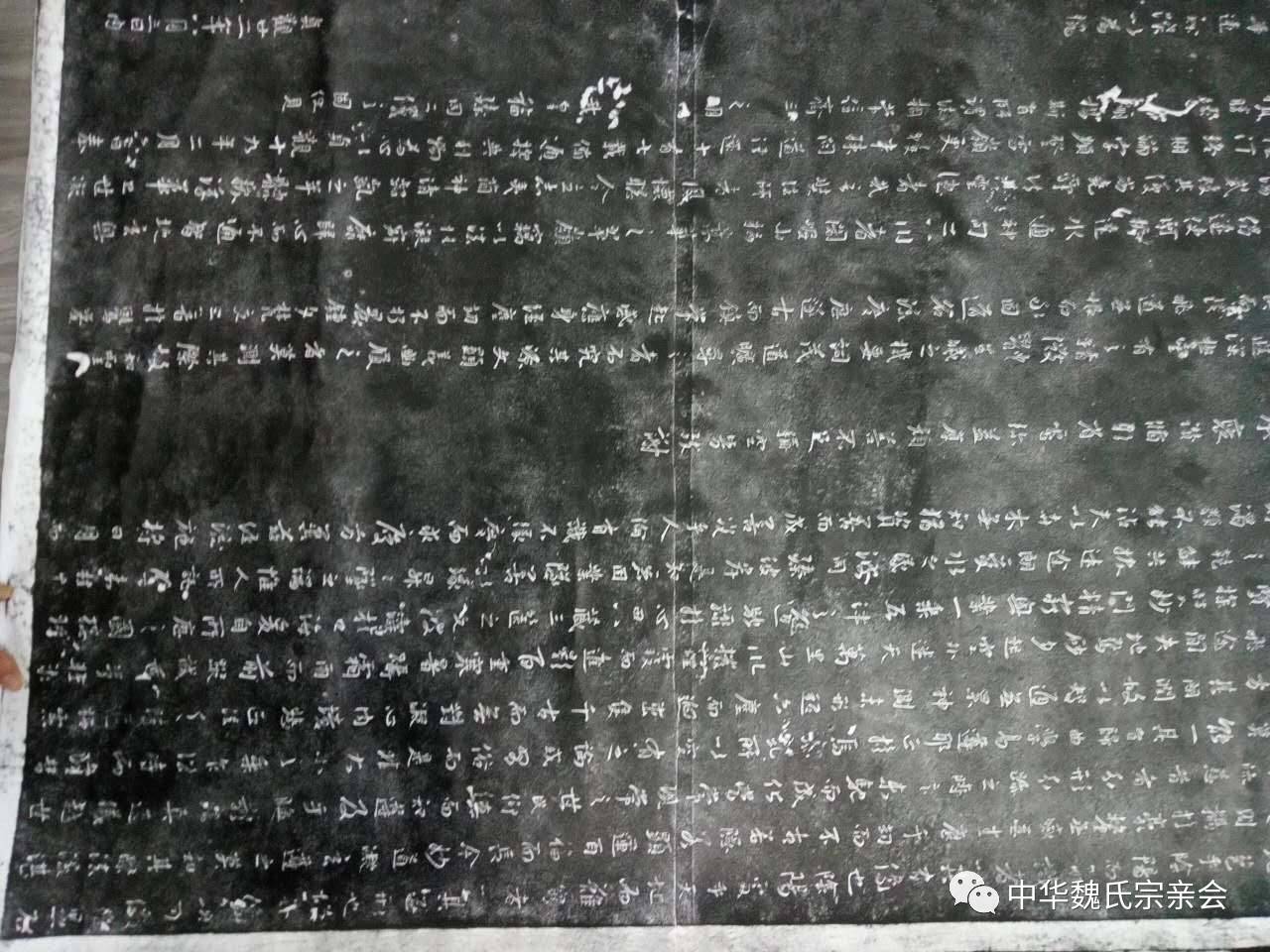Calligraphy has played an important role in the history of our country. It is not only a tool for cultural dissemination, but also cultivates people's ideological character. There are many types of calligraphy: regular script, official script, cursive script, running script, and Wei Bei, as a kind of regular script, exudes her unique charm. Today we will popularize Wei Bei.

During the Wei, Jin, Southern and Northern Dynasties, the society was turbulent and the people were living in dire straits. Buddhism and Taoism, which met the needs of social consciousness, flourished vigorously. The propaganda method of Buddhism and Taoism regards writing scriptures as a great merit. Especially in Buddhism, whenever new temples and pagodas are built and Buddha statues are built, scholars of literature must be hired to write articles to record the events. They may chisel stones for steles, or write on natural rocks and cliffs. For a while, the fashion of erecting steles popular in the Han Dynasty has turned to the Buddhist practice of building temples and pagodas, erecting steles and carving stones. Although there are endless wars in the four seas, the statues' desire for longevity is even more intense, and the stone Buddha inscriptions are scattered all over the mountains and valleys, no less than tens of millions. Weibei came into being.
After the Eastern Jin Dynasty, the north and the south were divided, and calligraphy was also divided into the north and the south. The northern style of calligraphy, with the legacy of the Han Dynasty, has an ancient and strong brushwork, but the style is simple and strict, and it is better than the list. This is the so-called Wei Bei. Calligraphy of the Southern School, Wei steles are sparse and beautiful, and they are better than chido. In the Southern and Northern Dynasties, due to the geographical differences, personal habits and calligraphy styles were quite different. The northern book is firm and strong, while the southern book is rich and subtle, each is perfect, and there is no distinction between superior and inferior.
The calligraphy strokes of the Wei stele are rigorous, simple, thick and flexible, plump without losing the engraving, inheriting the official script of the Han Dynasty on the upper part, and opening the regular script of the Tang Dynasty on the lower part, with the charm of both official script and regular script. Its calligraphy art is developed and evolved on the basis of Han Li and Jin Kai, and it can be called the top grade among Han steles. Calligraphers from ancient and modern times have given the highest evaluation to this stele, which can be called the stele of the integration of Han steles.

Calligraphers in modern and modern times highly respect the Wei stele, and there are many scholars who come to it, especially in northern my country. Perhaps the majestic and simple Wei stele is consistent with the boldness of the northerners, and there are quite a few people with high attainments. For example, Xiao Xian from Nanjing was a student of Kang Youwei, and she understood the meaning of Wei Bei's brushwork in a chic and unrestrained manner. Li Zhimin has studied calligraphy masters of all dynasties, advocated "combination of stele and post", and "bringing stele into grass" is one of his great contributions. Yu Youren's Xingkaishu art is the combination of running script and official script in the Northern Wei Kaishu. Calligraphy such as Wu Zhongqi and Wei Tianchi are amazingly well-done, and they are full of energy, and their Wei stele flavor is still very strong. The brilliance of their calligraphy lies in taking the gods of Wei steles and creating an artistic realm with their own individual characteristics. The highest state of calligraphy is to get the shape when you get started, and get the spirit when you go out.
Wei Bei is a kind of regular script, and Wei Kai, Jin Dynasty regular script and Tang Dynasty regular script are called the three major regular script fonts. The Wei stele shows some transitional factors in the development process from official script to typical regular script. Regular script already existed during the Wei and Jin Dynasties, and regular script works such as Zhong Yao's "Xuan Xian Biao" and Wang Xizhi's "Huang Ting Jing" were already relatively mature regular scripts. Different. Most of the extant stele inscriptions in the Northern Dynasties are the works of calligraphers of unknown folks, which are naturally different from the calligraphy style of the so-called "fair and subtle" calligraphy of the scholar-bureaucrats in the Southern Dynasties. Zhong Yao and Wang Xizhi completed part of the process of changing from official script to regular script. Due to the transition of the Jin family to the south, the folk calligraphers of the Northern Wei Dynasty did not inherit much of their achievements, but followed the development track of the original folk calligraphy, more directly from the Han Dynasty. The official script of the Wei period evolved. Compared with the stele inscriptions of the Southern Dynasties, Liu Xizai, a calligrapher of the Qing Dynasty, believed that "the southern calligraphy is gentle and the northern calligraphy is vigorous." The body is shaped according to the situation and is not restrained.

Kang Youwei praised the Wei stele for its "ten beauties" in "Guang Yi Zhou Shuang Ji": "Among the ancient and modern times, only the Nan stele and the Wei stele can be regarded as ancestral. What is the ancestry? There are ten beauties: one is courageous and strong, and the other is weather. Hun Mu, the third is the leaping brushwork, the fourth is the stippling, the fifth is the unique mood, the sixth is the spirit is flying, the seventh is full of interest, the eighth is the bone method, the ninth is the natural structure, the tenth is the flesh and blood, They are ten beautiful ones, and only Wei Bei Nan Bei has them." Zhong Zhishuai's "Xue Xuan Calligraphy" said: "Wei Bei's calligraphy inherits the aftermath of Han and Li, and inspires the first voice of Tang Kai." Several masters of regular script in the early Tang Dynasty, such as Ouyang Xun, Yu Shinan, Chu Suiliang, etc. are all based on Wei Bei.
The Wei stele was discovered earlier, but it has not attracted people's attention. In some works of calligraphers Ouyang Xun and Chu Suiliang of the Tang Dynasty, the influence of the inscriptions of the Northern Dynasty on them can be seen. Because Emperor Taizong Li Shimin admired Wang Xizhi's calligraphy, the calligraphy style of the Jin Dynasty represented by Wang Shu was always the mainstream in the Tang Dynasty. Therefore, in general, the regular script of the Tang Dynasty inherited more of the tradition of Jin Kai. Even if some methods were adopted from Wei Bei, it was mostly due to the personal interests and styles of calligraphers, and a general atmosphere of learning from Wei Bei could not be formed.
The height reached by Tang Kai and its strict laws and regulations, to a certain extent, made the practice of regular script become routine for later generations, and the appearance of regular script became standardized, thus losing creativity. As a result, none of the four great calligraphers of the Song Dynasty, Su Shi, Huang Tingjian, Mi Fu, and Cai Xiang, had regular script works comparable to those of the Tang Dynasty, but devoted their energy to the creation of running script and cursive script. In the Ming Dynasty, due to the increasingly rigid imperial examinations, a style of calligraphy called "Taige Style" emerged. "Taige style" regular script is the official font stipulated by the imperial examination, which pursues beauty and generosity, and also requires standards and norms. This requirement inhibits the calligrapher's creative personality. In the Qing Dynasty, it further evolved into a "guange style", which was criticized as "a thousand people are the same".

In the early Qing Dynasty, Jinshi philology emerged, and a large number of inscriptions in the Northern and Southern Dynasties were unearthed; in terms of calligraphy, people also began to reflect on the disadvantages of the "Guange Style". Therefore, during the Jiaqing and Daoguang years, the Wei stele began to be valued by calligraphers and calligraphy theorists. Among them, Ruan Yuan and Bao Shichen were the most vigorous advocates of the Wei stele in the early days, and Kang Youwei in the later period. Ruan Yuan wrote "North Stele and South Tie Lun" and "North and South Calligraphy Theory", and advocated "Study of Monuments"; Bao Shichen wrote "Shuangyi Boat", and Kang Youwei wrote "Shuangyi Boat", which reversed the attitude towards Chun Dynasty since the Song Dynasty. The praise of Huage posts puts forward the viewpoint of "respecting steles and suppressing posts". Kang Youwei clearly pointed out in "Guang Yi Zhou Shuang Ji": "Today, if you want to respect the calligraphy, you have to turn over the broken ones, and you have to respect the steles; Those who are respected are not based on their ancient times. The strokes are intact, the spirit is revealed, and it is easy to copy, one is; the change of official script can be tested, the other is; the origin and flow of later generations can be tested, three are; The body is well prepared, four things; the brushwork is comfortable and long, and the characters are carved, and the majestic corners come out, and there is no time to meet them. In fact, there is nothing in the Tang and Song Dynasties. Five things. If there are five things, it is not suitable to be respected!" Afterwards, the stele study Popularity, the value of Wei Bei has been generally recognized, and those who practice regular script not only follow the "Jin and Tang" style, but also more and more people begin to choose Wei Bei. In addition, Wei Bei has been standardized to become "Wei Ti", which is one of the most commonly used Chinese printing fonts.
Welcome to pay attention to the WeChat public account of the Chinese Wei Clan Association: zhwszqh
Welcome all Wei family members to contribute. This WeChat public account is convenient for clan members to contact each other and communicate with each other. , Promote the prosperity and development of the Wei family! Contribution email: 3240562561@qq.com
Articles are uploaded by users and are for non-commercial browsing only. Posted by: Lomu, please indicate the source: https://www.daogebangong.com/en/articles/detail/Calligraphy%20Science%20Popularization%20Three%20Regular%20Script%20FontsWei%20Bei.html

 支付宝扫一扫
支付宝扫一扫 
评论列表(196条)
测试